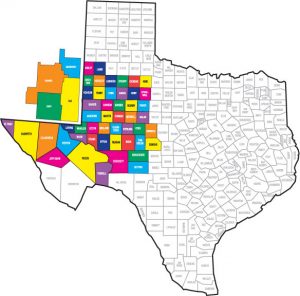Biggest Permian players by acreage:
Occidental Petroleum (Houston), 2.5 million net acres
Exxon Mobil (Irving), 1.8 million
Chevron (San Ramon, Calif.), 1.7 million
Apache Corp. (Houston), 1.6 million
ConocoPhillips (Houston), 1 million
Devon Energy (Oklahoma City), 670,000
Pioneer Natural Resources (Irving), 660,000
Concho Resources (Midland), 642,000
EOG Resources (Houston), 559,000
Cimarex Energy (Denver), 380,450
Anadarko Petroleum (The Woodlands), 240,000
Energen Corp. (Birmingham, Alabama), 240,000
Parsley Energy (Austin), 216,000
Diamondback Energy (Midland), 207,000
WPX Energy (Tulsa, Okla.), 131,000

One recent example of a big oil and gas deal was the announcement by Concho Resources of Midland that it will pay $8 billion to buy RSP Permian of Dallas just so it could acquire 100,000 acres contiguous to Concho’s Permian holdings.
The rush to buy land or lease it in the Permian peaked about one year ago and the acquisitions totaled a reported $18 billion. The fall-off was quick because by the second half of 2017, the deals totaled less than $4 billion according to research firm IHS Markit.
However, there was a rebound in the first three months of 2018 and the Permian deals reached $10 billion, thanks mostly to Concho Resources purchase of RSP Permian.
While the big boys have most of the holdings in the Permian, more than 500 exploration and production companies have holdings in the region across west Texas and eastern New Mexico. But the biggest challenge facing them now is a lack of drilling rigs. There are fewer than 450, thus resulting in a shortage of fracking crews as well. That shortage, according to analysts, will likely spark consolidation among all of those companies.








